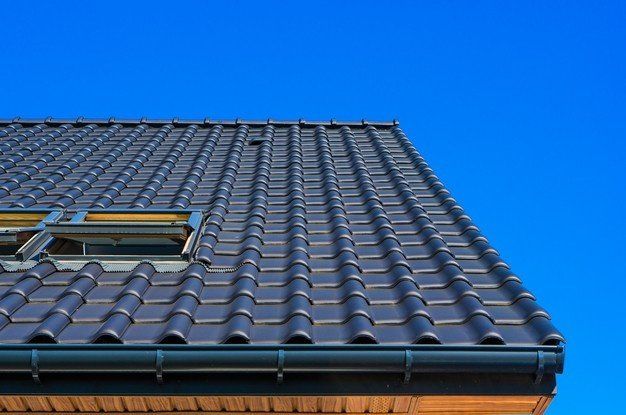Roof Waterproofing in New York City, New York

Roof waterproofing, also called roof leakage. Our waterproofing services is essentially the secondary layer of protection added to a roof that ensures that no water ever gets into your house or starts affecting the supporting beams or walls. There are several common causes for roof water leaks, all of which have a major impact on the degree of waterproofing that's present on your roof. The amount of water that seeps into your house can be as little as 0.1 inches in areas where there are no waterproofing barriers or practices in place to prevent water access. It can also spread quickly and heavily, even reaching hundreds of feet from the building, compromising your entire home.
Common Causes of Roof Leaks
One of the main causes for roof leaks is poor roof waterproofing practices. Common roof waterproofing practices include not flashing over walkways, gutters, and eaves, as well as leaving the valleys between the walls and the ceiling dry so that water can flow underneath the roof. This is known as slope drainage. Unfortunately, this practice can lead to roofs that leak because water can seep under the roof and into the walls of a building when the slope is not taken care of properly. While slopes may not pose an immediate threat to your home and your family, it is imperative that you address the issue of slope drainage in order to prevent serious water damage.

Contact Us
Poorly-Constructed Roof Can Cause Foundational Cracks
Another major cause for roof leaks is materials used in the construction of your house and its roof. Many people mistakenly think that the use of waterproofing materials will fix any leak problems on their roof. That's simply not true. The materials used in the construction of your house are among the primary causes for water entry on your roof. Not only does the material used in the roof provide a watertight barrier against the elements, but it also provides an area through which moisture and water can penetrate the roof.
Types of Waterproofing Systems
There are several types of roof waterproofing systems available to homeowners. There is a basic system consisting of a membrane or a rubber sheet attached to the roof. However, there are a number of different materials used to create these membranes. For example, there are tiles, a membrane glued to asphalt shingles, wood, ceramic fibers and various synthetic materials. All of these different materials can have different properties and perform differently in the way they deflect and absorb water.
Factors to Consider When Choosing a Waterproofing System
When choosing a roof waterproofing system, a building owner must take many factors into consideration. He must know exactly what type of roof he has, how much water pressure the roof may experience, what type of materials are used in the construction of the building, and what sort of budget he has allotted for the project. When these and other factors are taken into account, a building owner will be better able to determine what type of waterproofing system he should use for his home.
One important factor to consider is whether or not a roof waterproofing near me system will be sufficient enough to protect the occupants of the dwelling from the effects of inclement weather. For example, a hot, summer day can quickly bring down a roof that was properly built to protect from heat and UV rays. Likewise, a cold, winter day can quickly do damage to any roof that is not properly sealed against snow, rain and other elements. A good rule of thumb to follow is that a homeowner should only install a roofing system if it can be expected to protect his or her home for at least three years. If the homeowner is unable to afford an expensive roofing system right now, he or she may want to reconsider getting one and wait until he or she has a little more money saved up.
Water Seepage
On a related note, water seepage is also a major concern for people who own homes with slanted roofs. These houses generally experience roof leakage waterproofing services due to water seepages, which cause cracks on the surface of the roof and on the interior wall cavities. These cracks, if left unnoticed, can quickly turn into significant water seepages over time. In addition to causing significant water seepages, leakages from these cavities can also cause the interior part of the house to freeze during the winter. Seeking the assistance of a commercial roofing service that specializes in roof waterproofing services can provide expertise (skills and trust) and customer service necessary to address these issues effectively. Their team is well-versed in identifying and repairing structural damage caused by liquid intrusion, ensuring roof waterproofing house, privacy, and safety for the homeowners.
Properly-Installed and Insulated Roof
As a final step to take in protecting your home from inclement weather, it helps to have a properly installed roof membrane installed before beginning any roof maintenance or repair projects. The membranes are applied to the surface of the roof and help to stop rain, sleet, snow and other forms of precipitation from getting through and damaging your roof. It also acts as a barrier against soil and mold, which can often cause damage to the roof by encouraging soil erosion. These are usually made out of a synthetic rubber like material, which makes it easy to apply. In addition to preventing surface damage, the membrane does its job by reducing the amount of heat that is absorbed by the roof structures as well as helping to keep the structure free of moisture.
In conclusion, safeguarding your home with roof waterproofing is a crucial step in preventing water damage, structural issues, and long-term costly repairs. Whether you're dealing with slanted roofs, foundational cracks, or water seepage, it's essential to choose a well-suited waterproofing system and ensure proper installation. For expert assistance with your roofing needs, don’t hesitate to contact us and protect your home today.
Check out our blog for additional insights and tips on maintaining a water-resistant and durable roof!
